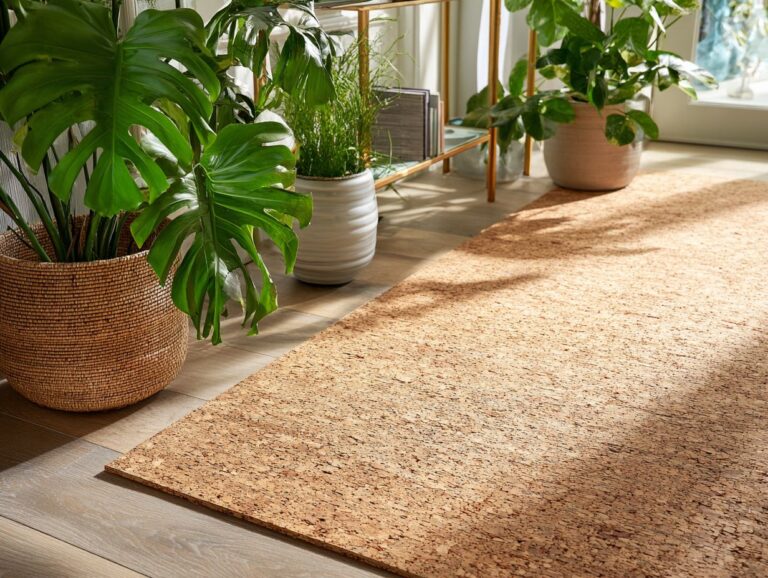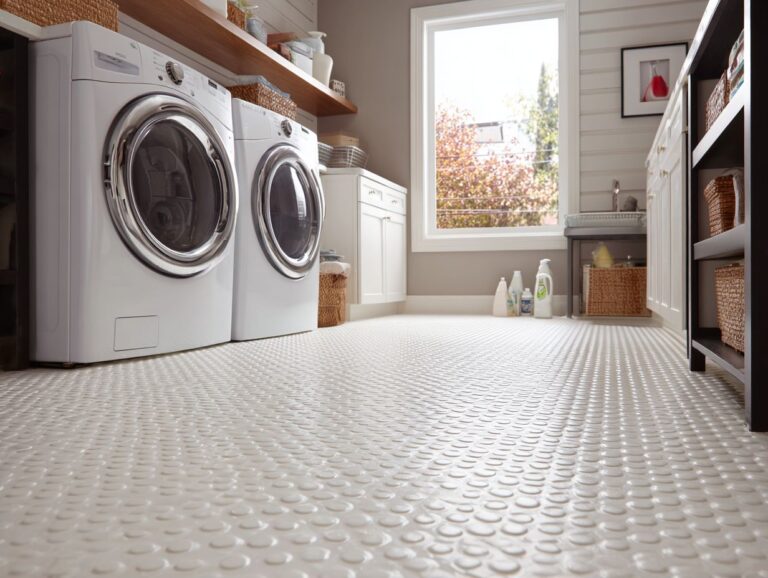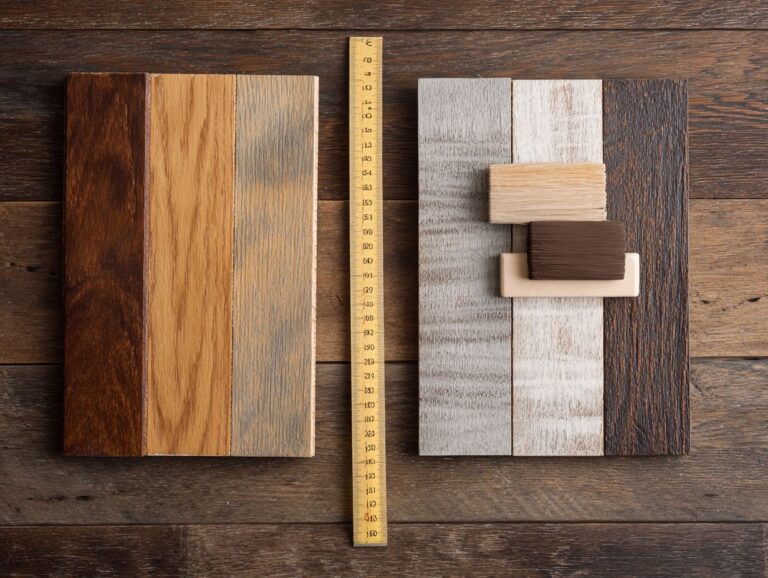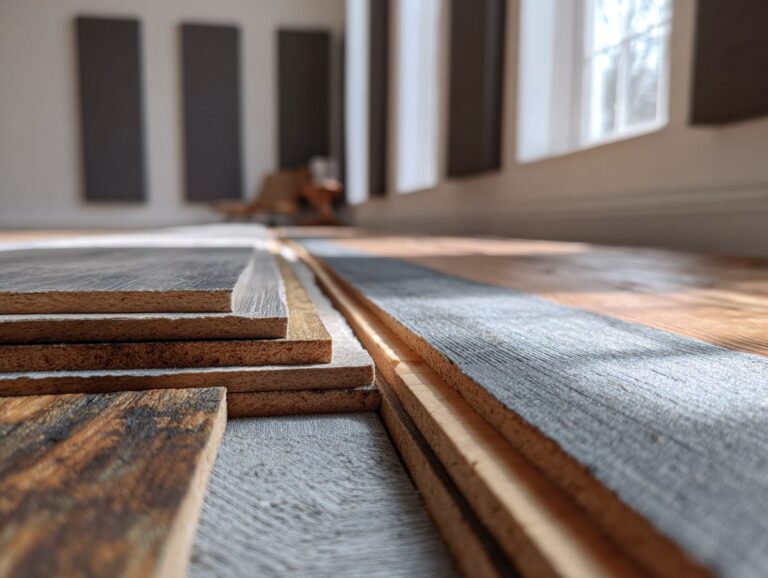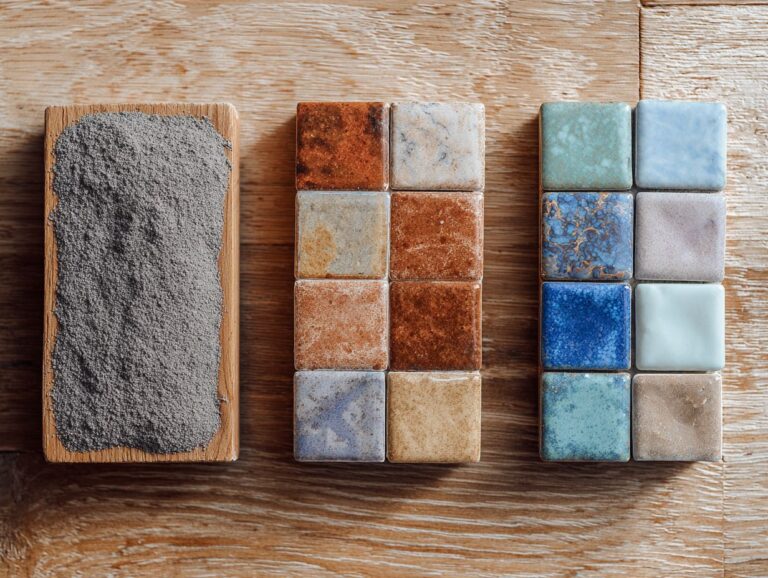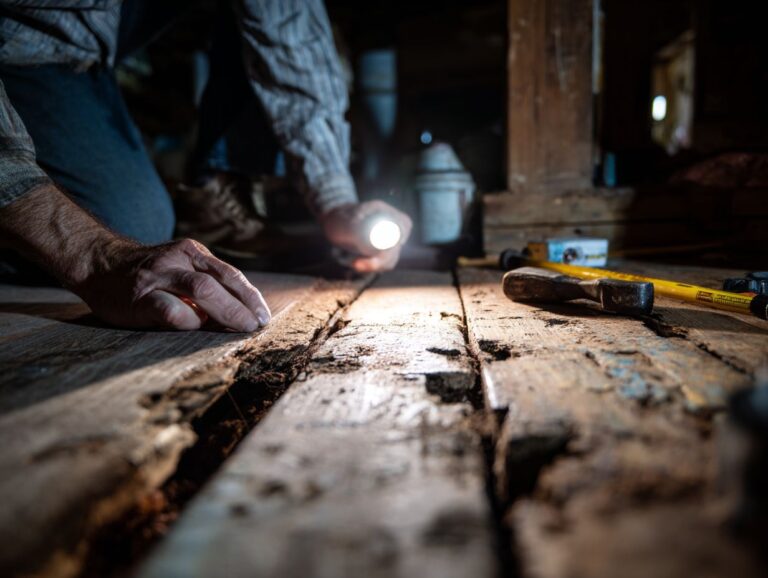High-Pressure vs Direct-Pressure Laminate Manufacturing
If you’re choosing laminate floors, it’s important to know the differences between high-pressure laminate (HPL) and low-pressure laminate (DPL) manufacturing. Each method impacts durability, design, and application, from floating floors to underlayment solutions. This article thoroughly examines how HPL and DPL are made, their benefits, and uses, helping you choose wisely for your laminate flooring needs. Learn more about laminate options and find the ideal choice for your project!
Key Takeaways:
Contents
- High-Pressure Laminate (HPL)
- Direct-Pressure Laminate (DPL)
- Comparative Analysis: HPL vs. DPL
- Laminate Manufacturing and Market Trends
- Frequently Asked Questions
- What is the difference between High-Pressure and Direct-Pressure Laminate Manufacturing?
- Which method is more durable? High-Pressure or Direct-Pressure Laminate Manufacturing?
- Is there a difference in the visual appearance of High-Pressure and Direct-Pressure laminate?
- Which method is better for high-traffic areas?
- Are there any environmental considerations when choosing between High-Pressure and Direct-Pressure laminate?
- Which method is more cost-effective?
Definition and Overview
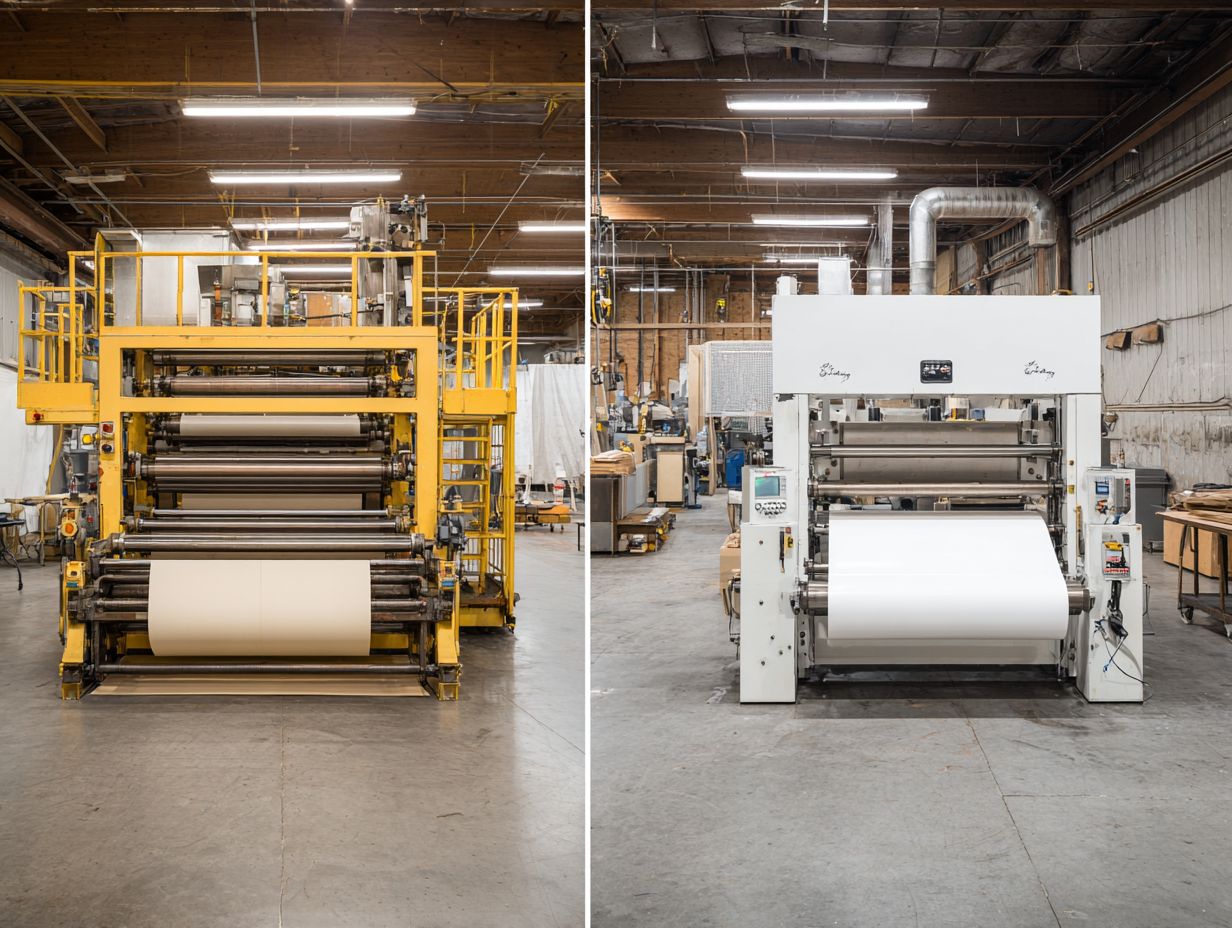
Laminate flooring is a multi-layer synthetic product fused together using a lamination process, typically consisting of a decorative layer, core layer, and a moisture barrier.
The decorative layer mimics the appearance of wood, stone, or tile, providing a stylish look without the high cost. The core layer, usually made from high-density fiberboard (HDF), offers strength and resistance to impacts.
The protective layer prevents damage from water and dampness, which makes laminate a good choice for kitchens and bathrooms. This flooring solution is renowned for its durability, resisting scratches and fading, and is often more affordable than traditional hardwood, averaging between $1 to $5 per square foot.
Installation is also a breeze, with many options designed for a simple click-lock assembly.
Importance of Laminate in Various Industries
Laminate flooring is important in homes and businesses, providing attractive and cost-effective flooring choices that look like real wood.
Its flexibility lets it fit easily into different spaces, like kitchens and living rooms. For homeowners, laminate is easy to install-often available in click-lock designs that enable DIY projects to flourish.
Businesses benefit from the durability of laminate, which can withstand heavy foot traffic; many commercial options include water-resistant features. Brands like Pergo, Quick-Step, and Mohawk offer many designs and finishes. This makes it simple to find something that fits any room style, with prices usually ranging from $1 to $5 per square foot. (See also: Understanding Laminate Flooring – Construction & Benefits)
High-Pressure Laminate (HPL)
High-pressure laminate (HPL) is recognized for its durable nature, making it a popular choice for places requiring strong, long-lasting surfaces.
Manufacturing Process of HPL
The HPL manufacturing process involves stacking high-density fiberboard with decorative and protective layers, pressed together with melamine resin under high pressure, creating a strong final product.
The process begins with the selection of a high-density fiberboard substrate, which provides the core strength. Next, a decorative layer, often made of printed paper or foil, is placed atop the board.
Over this, a clear melamine overlay is added for durability and protection. The entire assembly is then subjected to high pressure (around 1,000 psi) and heat (about 150 degreesC) in a hydraulic press, ensuring the layers bond seamlessly.
This enhances the laminate’s look and increases its resistance to scratches, impacts, and moisture, making it practical for various uses.
Materials Used in HPL Production
Key materials in HPL production include high-density fiberboard for strength, decorative layers for aesthetic appeal, and protective layers for stain resistance.
The high-density fiberboard provides a solid, stable base, enhancing the structural integrity of HPL. Decorative layers, often made from printed paper or fabric, offer diverse design options, allowing for customization and visual appeal.
The protective coatings, usually made from thermosetting resins, offer scratch, moisture, and chemical resistance, which greatly extends the product’s lifespan and makes it easier to care for.
Together, these components create a flexible product that can be used for many purposes, such as countertops and wall panels.
Applications of High-Pressure Laminate
HPL is used in many places, from floors in homes to surfaces that get a lot of use in places like restaurants and hospitals.
In residential homes, HPL is often used for countertops and cabinetry, providing durability and aesthetic appeal.
For instance, a family might choose HPL for their kitchen surfaces due to its resistance to scratches and spills.
In places like hospitals, HPL is used for wall panels and furniture because it holds up well to regular cleaning and disinfecting, which is important for keeping health standards.
Tools like Formica and Wilsonart offer a range of textures and colors, allowing customization to suit any space while ensuring longevity.
Advantages and Disadvantages of HPL
HPL has benefits like being long-lasting and available in many styles, but it can be expensive and hard to install.
A major advantage of High-Pressure Laminate (HPL) is its durability. It can withstand over 100 cycles on the Martindale scale, making it ideal for high-traffic areas.
HPL is available in many designs and colors, offering creative choices. Its cost can range from $30 to $100 per sheet, which might not fit all budgets.
Installation can also be complex; using professional services is advisable, leading to additional costs. Weigh these factors based on your specific project needs to make an informed decision.
Direct-Pressure Laminate (DPL)
Direct-pressure laminate (DPL) is an affordable option compared to HPL, ideal for less intense uses while still looking good.
Manufacturing Process of DPL
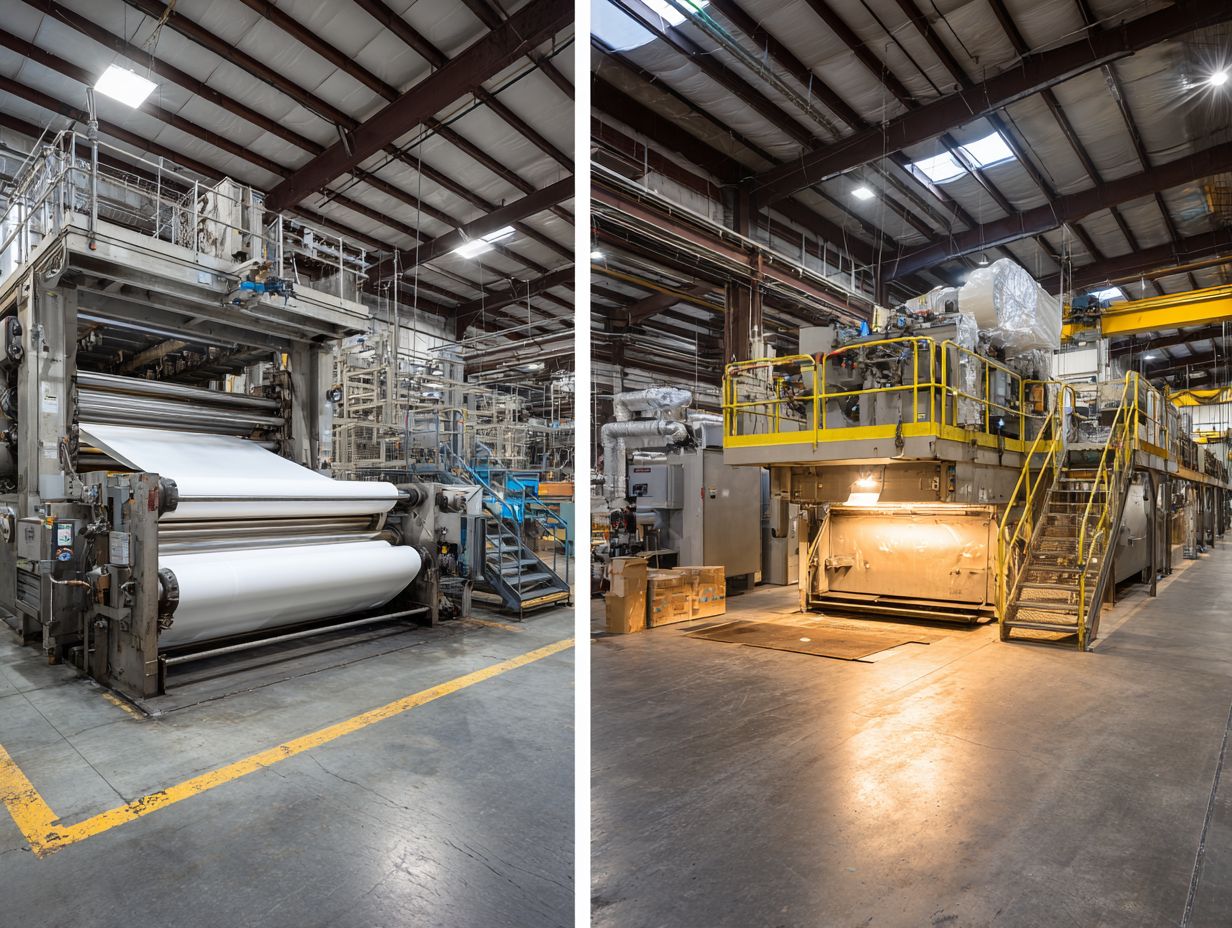
The DPL manufacturing process involves bonding a decorative layer directly to a core layer without the high pressure used in HPL production, resulting in a lighter product.
This approach offers benefits like faster production and lower material expenses.
Unlike HPL, which needs many press cycles under high pressure, DPL can be made quickly in a continuous flow process. A common use of DPL is in ready-to-assemble furniture, where it’s important to reduce weight.
The manufacturing process is less intense, offering more finishes and designs, which makes DPL suitable for different modern uses.
Materials Used in DPL Production
DPL production uses the same materials as HPL, mainly high-density fiberboard and a melamine resin coating, but uses a simpler bonding method.
This simple link helps DPL to remain flexible and cut costs, making it suitable for basic setups like home projects.
For example, in furniture manufacturing, DPL can provide an aesthetically pleasing surface while minimizing weight. Using tools like a melamine edge bander can improve the strength and appearance.
Although DPL isn’t as tough as HPL for demanding jobs, it’s cheaper and simpler to put in, making it ideal for regular tasks such as cabinetry or light shelving.
Applications of Direct-Pressure Laminate
DPL is commonly applied in residential settings, including kitchens and living rooms, where aesthetics and budget play a critical role.
With DPL, homeowners can get an expensive appearance without spending too much. For instance, using DPL panels for backsplash in the kitchen can mimic the appeal of expensive tiles while costing significantly less.
Using DPL for accent walls in living rooms adds depth and character; a simple coat of paint can improve its look even more. Put these items together with affordable lights or furniture, and you’ll have stylish areas that work well and look good.
This approach helps you make the most of your budget and turns your home into a stylish retreat.
Advantages and Disadvantages of DPL
DPL is favored for its affordability and ease of installation, yet it may lack the durability and resistance characteristics found in HPL.
DPL, known as Decorative Printed Laminates, are typically 30-50% cheaper than HPL, which stands for High-Pressure Laminates. This makes them a suitable choice for projects with limited funds.
While DPL is suitable for low-traffic surfaces like cabinets or wall panels, its vulnerability to scratches and moisture represents a significant drawback. On the other hand, HPL’s strong structure makes it suitable for busy areas like commercial spaces.
For example, choosing HPL for a restaurant countertop will make it durable, while DPL could be a good choice for decorative purposes in a home office, providing a nice appearance at a lower cost.
Comparative Analysis: HPL vs. DPL
A detailed comparison of HPL and DPL shows clear differences in their cost, durability, and suitability for homeowners.
Cost Comparison
High-Pressure Laminate (HPL) generally costs between $3 and $8 per square foot. In contrast, Direct Pressure Laminate (DPL) is priced from $1.50 to $5, which makes DPL a more affordable option for those watching their budget.
When considering installation costs, HPL typically adds about $1 to $3 per square foot, depending on the complexity of the layout and any additional finishing required.
In contrast, DPL installation can be as low as $0.50 per square foot. For a medium-sized project of 500 square feet, you might expect HPL to total around $2,500 to $4,500, versus DPL’s $1,000 to $2,500.
This significant difference often influences homeowners toward DPL for simpler renovations while still providing decent quality.
Durability and Performance
In terms of durability, HPL excels with higher abrasion resistance, while DPL may be more prone to scratches and dents under heavy use.
For instance, HPL boasts an AC rating typically between 4-5, indicating its suitability for high-traffic commercial areas, while DPL often falls around 2-3, suitable for lighter residential use.
HPL handles moisture well, so it’s perfect for kitchens and bathrooms. DPL doesn’t resist moisture as effectively and might warp.
If you’re deciding between them, consider your use case: choose HPL for durability in demanding environments and DPL for budget-friendly options in lower-traffic areas.
Design Flexibility
HPL offers broader design options with more realistic textures and colors, while DPL tends to have more limited patterns due to its manufacturing process.
HPL (High-Pressure Laminate) is celebrated for its stunning designs, featuring finishes like wood grains, stone effects, and vivid colors. For instance, brands like Wilsonart and Formica provide extensive collections, allowing for seamless integration in upscale interiors.
On the other hand, DPL (Direct Pressure Laminate) often relies on simpler patterns, typically suited for more budget-conscious projects. Examples of DPL finishes include basic wood looks or solid colors, which may lack the depth found in HPL.
Choosing between them often comes down to the desired aesthetic and project budget.
Environmental Impact
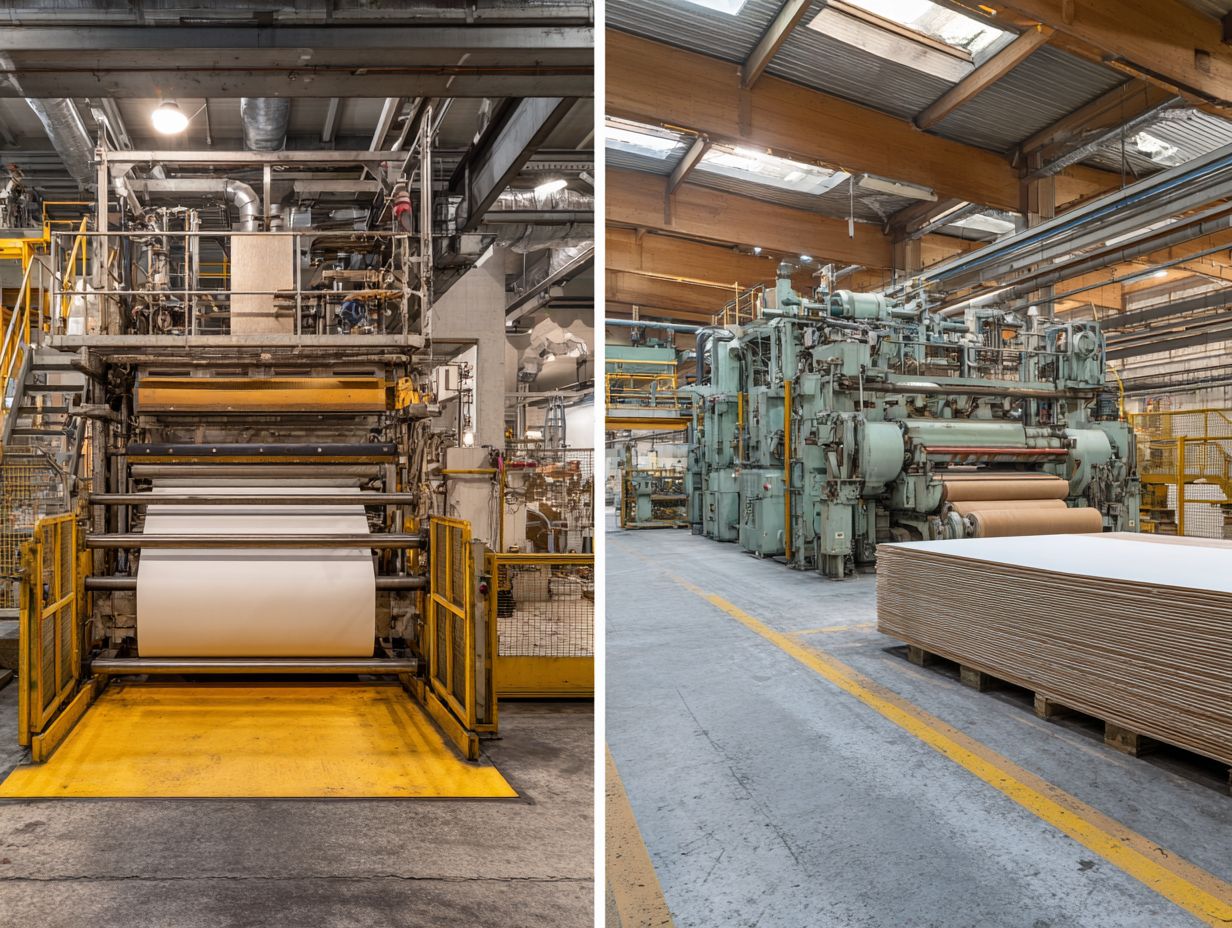
Both HPL and DPL can be produced with eco-friendly materials, but HPL generally has a lower environmental impact due to its longer lifespan.
HPL, or high-pressure laminate, typically uses recycled paper and water-based glue, making it more environmentally friendly to produce.
On the other hand, DPL, or direct-pressure laminate, typically requires fewer manufacturing steps but may involve more volatile organic compounds (VOCs) due to its binders.
To mitigate environmental impacts, laminate manufacturers are increasingly adopting certified sustainable practices, such as using FSC-certified wood and maintaining closed-loop systems.
These efforts cut down waste and improve the environmentally friendly practices of the laminate industry.
Summary of Key Differences
Key differences between HPL and DPL include cost, durability, and design options, which can drastically influence purchasing decisions.
HPL, or High Pressure Laminate, generally costs more due to its superior durability and aesthetic appeal. It is scratch and water-resistant, which makes it perfect for busy places such as kitchens.
In contrast, DPL, or Direct Pressure Laminate, is cheaper and sufficient for lighter use, but it may not hold up as well over time. Design-wise, HPL offers a wider array of finishes and colors compared to DPL.
When considering your project, evaluate the intended use and budget to choose the most suitable option.
Future Trends in Laminate Manufacturing
Upcoming developments in laminate production focus on being environmentally friendly and using new technologies, which will create more lifelike surfaces and sustainable materials.
Advancements in digital printing and improved surface coatings are altering the appearance of laminate, allowing designs to closely imitate natural materials. Companies like Egger are investing in bio-based resins to reduce environmental impact, while technologies like 3D printing are enabling custom shapes.
More people are choosing recycled materials for sustainability reasons. For example, some decorative laminates use waste from consumers, which makes them last longer and attracts environmentally aware buyers.
As these technologies change, laminate products will become more useful and suitable for environmentally friendly building methods.
Laminate Manufacturing and Market Trends
Laminate Manufacturing and Market Trends
Laminate Flooring Production Line Market: Market Revenue
Laminate Flooring Production Line Market: Growth Rates and Output
Laminate Flooring Production Line Market: Technological Advancements
The data on Laminate Manufacturing and Market Trends gives a detailed summary of the laminate flooring production line market, concentrating on market income, growth rates, production, and new technology developments. Knowing these data points helps stakeholders choose where to invest and plan their strategies.
Laminate Flooring Production Line Market highlights significant financial growth. The market revenue for 2024 is projected to be $5.6 billion. This figure is expected to rise to $8.9 billion by 2033 The market is growing because more people want long-lasting and affordable flooring options. This growth is supported by a compound annual growth rate (CAGR) of 5.4%. The steady CAGR suggests consistent demand and adoption of laminate flooring, which could be attributed to its affordability, ease of installation, and aesthetic versatility.
Growth Rates and Output data emphasizes China’s dominant role in the market. China holds a 38% share of global laminate flooring output, reflecting its strong manufacturing capabilities and cost advantages. This large portion highlights China’s key role in the worldwide supply chain for laminate flooring and its impact on market patterns.
Technological Advancements play an important role in the industry’s growth. Innovations have led to a 22% reduction in waste This makes the production process better for the environment and more cost-effective. Recent technological advancements have reduced the time needed for production by 18%, enhancing operational efficiency and enabling manufacturers to meet growing market demands more effectively.
- Market Revenue: Substantial growth from $5.6 billion in 2024 to $8.9 billion in 2033.
- Growth Rates and Output: A steady CAGR of 5.4% and China’s 38% share of global output.
- Technological Advancements: Significant reductions in waste (22%) and production time (18%).
The market for laminate flooring production lines is expected to grow significantly due to rising demand, major input from China, and continued advancements in technology. These factors together improve efficiency, lower harm to the environment, and make sure the industry can handle upcoming market demands.
Academic Sources
Academic sources provide detailed studies and results on how laminate is made, the materials used, and market trends.
For instance, the Journal of Materials Science published a study on the environmental sustainability of laminate flooring, highlighting biodegradable materials and recycling options.
The International Journal of Advanced Manufacturing Technology described new methods in creating laminate that improve strength and reduce costs.
The Flooring Journal looked at what customers like and how the market works, offering important information about how people buy.
Engaging with these publications can help professionals stay informed about industry advancements and best practices in laminate flooring.
Industry Reports
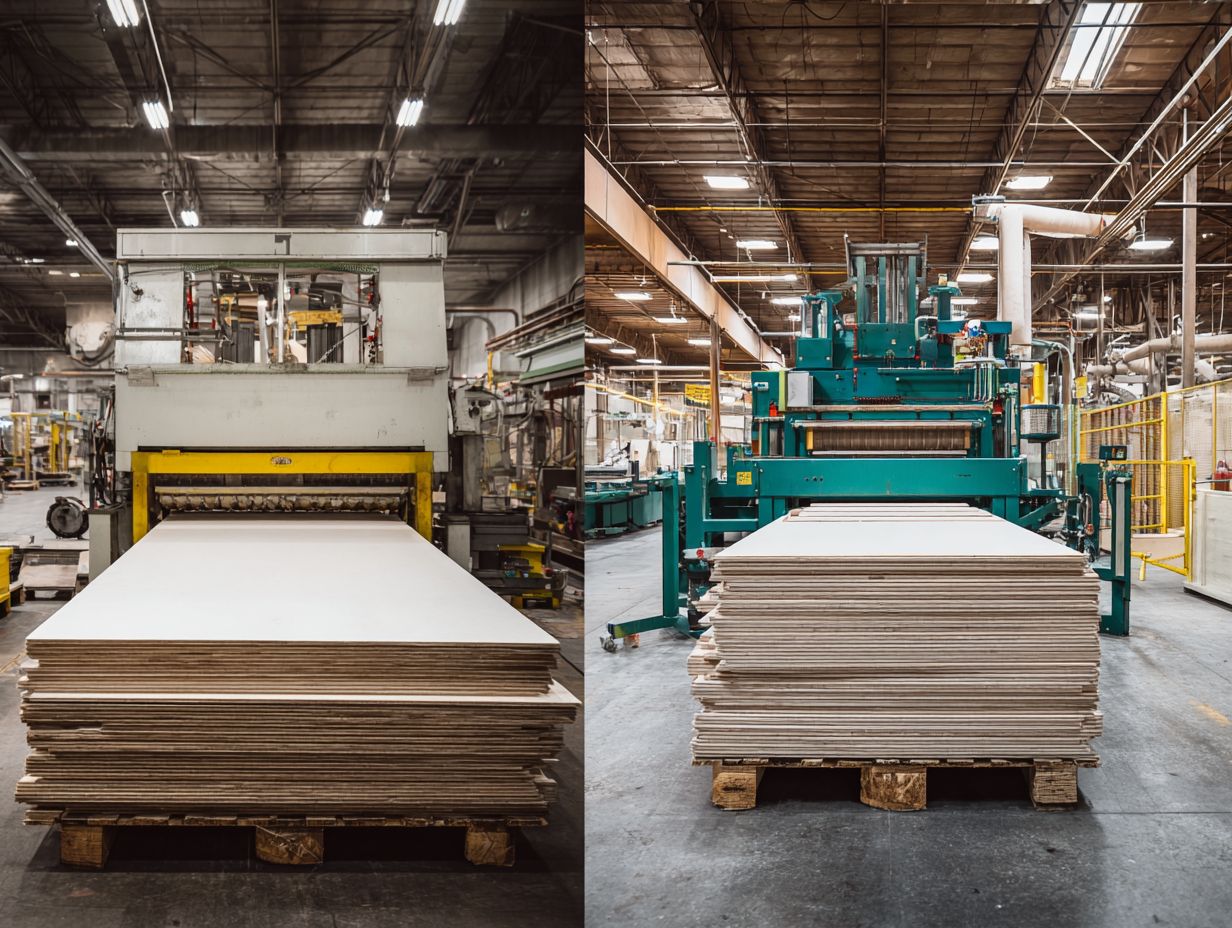
Reports from organizations such as the European Producers of Laminate Flooring offer important information about market trends and what consumers like.
These reports include critical data on laminate flooring usage, such as the annual growth rate and emerging design trends.
For instance, the `Global Laminate Flooring Market Report’ highlights a shift towards eco-friendly products, driven by increased consumer awareness. Similarly, the `North American Flooring Market Analysis’ projects significant growth in luxury laminate sales, reflecting a demand for premium aesthetics at competitive prices.
Stakeholders can use tools like Statista and IBISWorld for current statistics and predictions, allowing them to make well-informed strategic decisions.
Web Resources
A lot of online resources, such as blogs and flooring websites, provide useful tips and information on how to install and care for laminate floors.
Some recommended sites include:
- ‘Lowe’s Home Improvement’ for installation guides and product recommendations,
- ‘The Spruce’ for maintenance tips and user reviews,
- ‘Home Depot’s DIY section’ for step-by-step tutorials.
Each site provides helpful articles for both new and experienced DIY enthusiasts to guide you in selecting and caring for laminate flooring.
Joining online groups such as ‘Reddit’s DIY subreddit’ allows you to learn from actual people who discuss their experiences and share how they solve problems.
Frequently Asked Questions
What is the difference between High-Pressure and Direct-Pressure Laminate Manufacturing?
High-Pressure and Direct-Pressure laminate manufacturing are two different methods used to produce laminated materials. In High-Pressure laminate manufacturing, a high level of pressure is applied to the materials during the production process. Direct-Pressure laminate manufacturing uses less pressure.
Which method is more durable? High-Pressure or Direct-Pressure Laminate Manufacturing?
High-Pressure laminate manufacturing is typically more durable than Direct-Pressure manufacturing. The high pressure in the production process makes the material solid and dense, which makes it more resistant to scratches and impact.
Is there a difference in the visual appearance of High-Pressure and Direct-Pressure laminate?
Yes, there can be a difference in the visual appearance of the two methods. High-Pressure laminate often has a smoother and more consistent surface, while Direct-Pressure laminate may have a slightly textured and less uniform appearance.
Which method is better for high-traffic areas?
High-Pressure laminate is a better choice for high-traffic areas due to its durability and resistance to wear and tear. The higher pressure used in the manufacturing process results in a stronger and more resilient material.
Are there any environmental considerations when choosing between High-Pressure and Direct-Pressure laminate?
Both methods have their own environmental impacts. High-Pressure laminate manufacturing requires more energy to produce, but it produces a longer lasting and more durable product. Direct-Pressure laminate manufacturing uses less energy, but the resulting product may not last as long and could contribute to more waste in the long run.
Which method is more cost-effective?
The cost-effectiveness of High-Pressure vs Direct-Pressure laminate manufacturing can vary depending on the specific materials and processes used. In general, High-Pressure laminate tends to be more expensive due to the higher pressure and energy requirements, but it also results in a longer lasting and more durable product. Direct-Pressure laminate may be a more cost-effective option upfront, but it may need to be replaced more frequently in high-traffic areas, resulting in higher long-term costs.
